Entries in Museums (20)
Preservation Spotlight: Karan Feder, Costume/Clothing preservationist
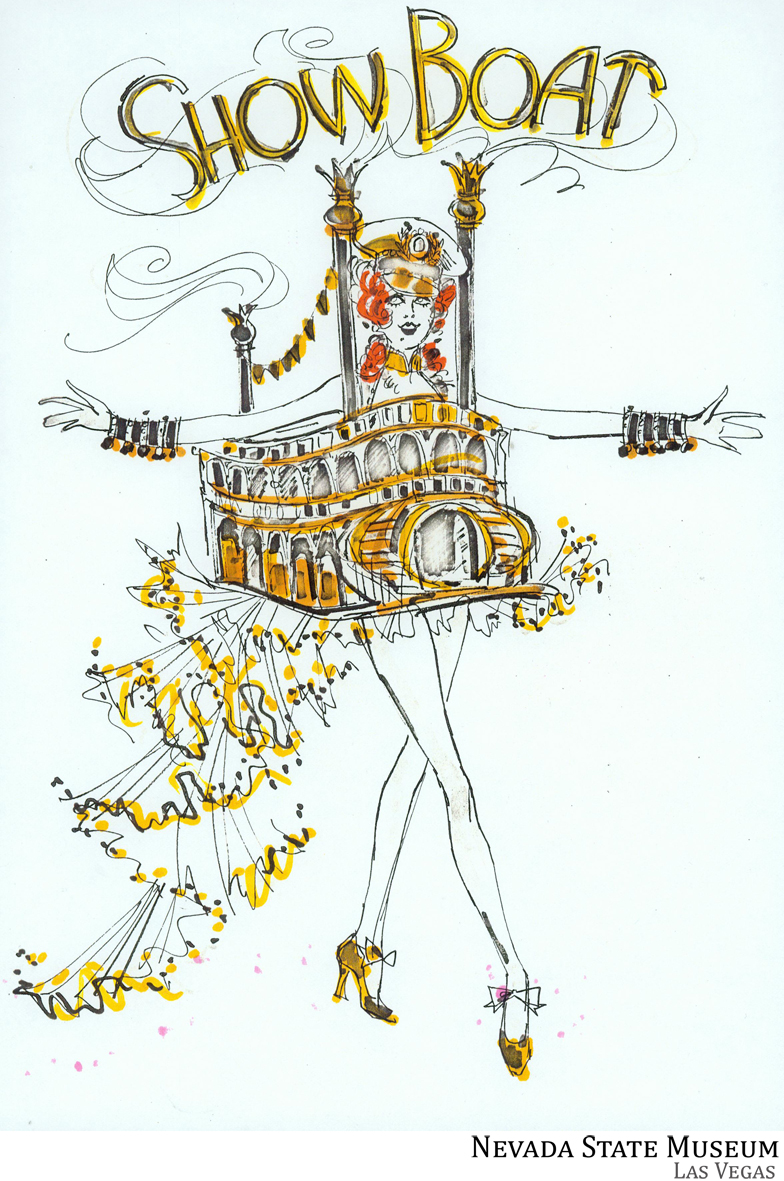
Costume sketch of "Showboat" costume from Hallelujah, Hollywood! production number Photo courtesy of Karan Feder
I had heard about Karan Feder's work as clothing and costume preservationist before I met her last September. When our paths finally did cross, it was because my mother was moving to a Senior Living establishment and the Nevada State Museum, Las Vegas was interested in some of her and my late dad's vintage clothing (my mother had outfits dating back to the late 1960s/early 1970s).
Karan has long been interested in preserving clothing but the classic Las Vegas era from the 1950s-1980s with its entertainers, showroom production numbers and the way that people used to dress to see a show, is of special interest to her.
She is the President of Entertainment Exhibitions and the Volunteer Curator of Costumes and Textiles at the Nevada State Museum, Las Vegas.
We had a great time talking about the challenges of preserving clothing and costumes:. (From the interview):
Feder: Another artifact of great interest to me is a one-of-a-kind Vegas stage costume donated to the museum. This is a large costume, as much sculpture as costume, measuring 4 feet long, 2 feet wide and 5 feet tall. The costume is fashioned to resemble a paddlewheel boat. Towering above the boat-portion, a marquee reads "Show Boat." There is a small handle crank on the right side of the costume that would have connected to the rear paddlewheel mechanism to create a realistic paddlewheel spin.
The donation included a few additional boxes of parts, pieces and accessories that were said to go with the costume. It was easy enough to identify the matching cap, bowtie, cuffs and panties found in the parts & pieces boxes, but what to do with the included various lengths of pleated, sequined and ruffled trim pieces?
Conservation and research continues, but with the help of the local entertainment community, the costume is now identified from the Vegas stage show Hallelujah Hollywood which ran from 1974-1980 at the
To read more of this fascinating interview, go to ClassicLasVegasBlog.com
Preservation Spotlight: Mark Hall-Patton, historian
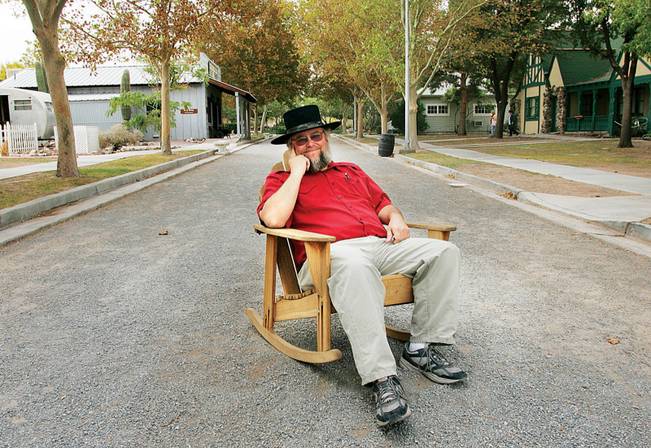
You've probably seen on on TV- from the local access Clark County channel to History Channel's Pawn Stars to talking with the late Huell Howser on Road Trip, Mark Hall-Patton is one of the most recognizable faces of local history.
With his Amish-like beard, ever-present Atwood hat and relaxed manner, Mark has become a favorite of producers when they want someone to talk about Las Vegas Valley history. He oversees the Clark County Museum system, including the Clark County Museum out on Boulder Highway - the home of Heritage Street, the Searchlight Museum and the Cannon Aviation Museum at McCarran Airport.
He also is the history advisor on the very popular Pawn Stars cable show. Despite his busy schedule and the fact he was planning an out-of-town trip, we were able to persuade him to answer a few questions.
CLV Blog: How did you become interested in Las Vegas history?
MHP: I came to the Vegas area in December 1993 to help create and manage a museum at McCarran International Airport. Now known as the Howard W. Cannon Aviation Museum, I had to do a great deal of research to know the history I was presenting.
As a local historian anywhere I reside, I began researching Las Vegas and Clark County history. I found our history interesting, but with many holes which led me to more research. In 2008 I was asked by the County to take over the entire Clark County museum system (3 museums, including the Clark County Museum, Searchlight History Museum, and the Cannon Aviation Museum).
Read more of the interview at ClassicLasVegasBlog.com
Preservation Spotlight: Dennis McBride
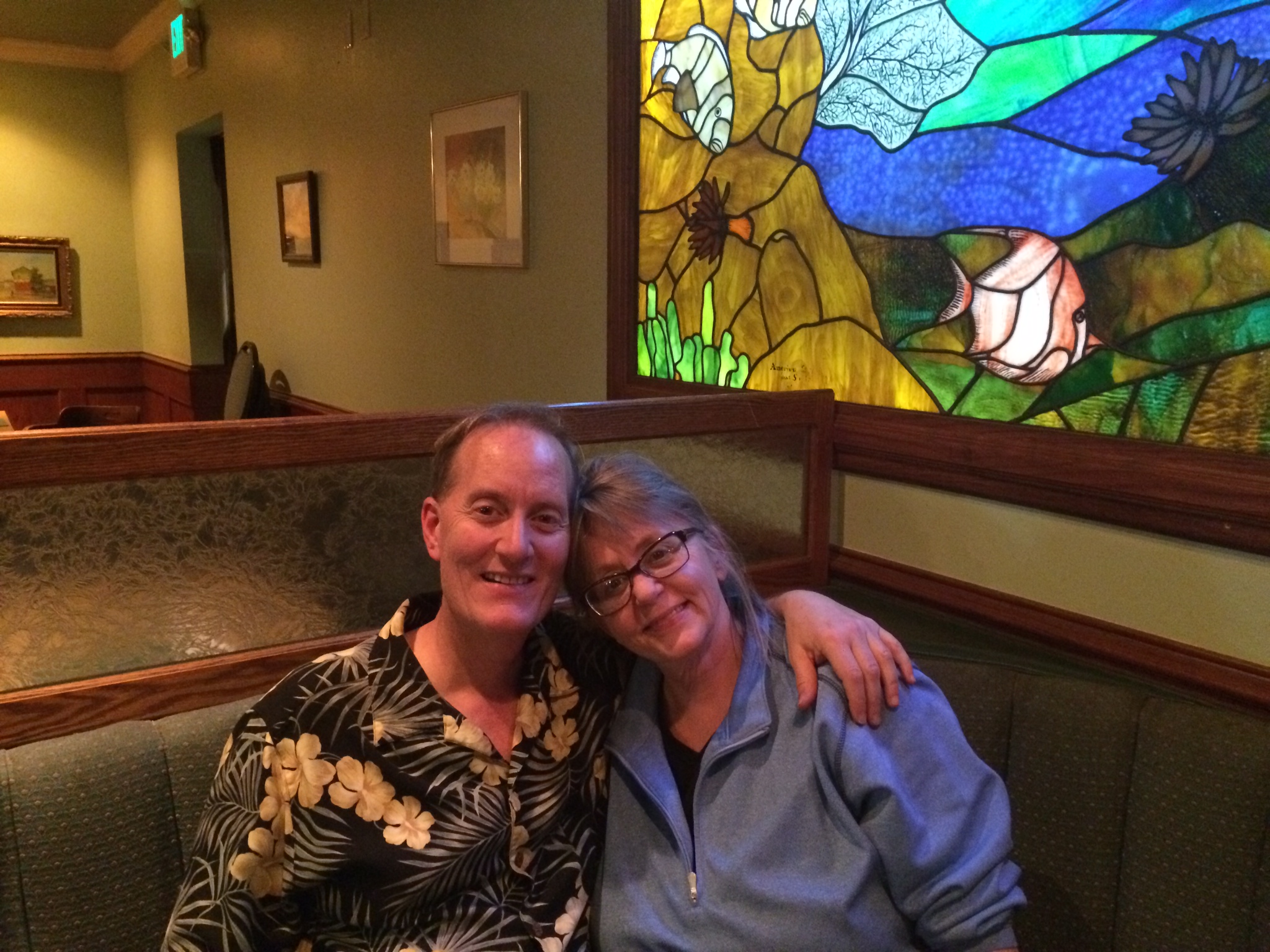
Today's Preservation Spotlight is on Dennis McBride, Executive Director of the Nevada State Museum, Las Vegas and longtime Las Vegas Valley historian.
I've been good friends with Dennis since we first met over ten years ago. He was one of the main inspirations behind my getting interested in preserving 20th Century Las Vegas history. His oral histories with the men who worked on the building of Boulder/Hoover Dam and the women who helped build Boulder City into more than just a Federal reservation were key to inspiring me. His pioneering work at the Boulder Dam Museum as well as his work in chronicling the history of the Gay and Lesbian movement in the Las Vegas Valley serve as inspirations to us all.
Today, Dennis helps preserve Las Vegas history at the State Museum and has a deep interest in the Photography collection there. Just a few years ago, he cataloged the J. Florian Mitchell collection that includes some wonderful images of mid-century modern Las Vegas.
We sat down with Dennis and talked about preservation and history in Las Vegas:
CLV Blog: How did you become interested in preserving Southern Nevada history?
McBride: Saving things, preserving things, collecting and organizing things is a significant part of my nature. I’ve been doing it since I was a child....
Read the rest of the interview at ClassicLasVegasBlog.com
The Mob Museum is coming soon!
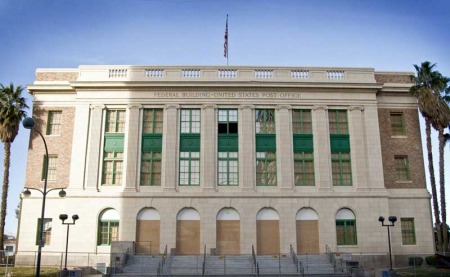
National Museum of Organized Crime and Law Enforcement opens in Las Vegas on February 14, 2012
There are two sides to every story — and then there’s the truth. Uncover the real life battle between organized crime and law enforcement when The Mob Museum opens to the public on Valentine’s Day, February 14, 2012. The Mob Museum, the National Museum of Organized Crime and Law Enforcement, is a world-class destination in downtown Las Vegas. It presents an exciting and authentic view of the mob’s impact on Las Vegas history and its unique imprint on the world.
The Museum, which has already acquired one of the most iconic artifacts in mob history – the brick wall from the St. Valentine’s Day Massacre, will open on the 83rd anniversary of the infamous Massacre, considered one of the most significant days in Mob history. Admission is $18 plus tax for adults ages 18-plus; $12 plus tax for children ages 5 to 17 and students ages 18 to 23 with ID; $14 plus tax for seniors, military, law enforcement and teachers; and $10 plus tax for Nevada residents of all ages. Museum hours will be Sundays through Thursdays from 10 a.m. to 7 p.m.; and Fridays and Saturdays 10 a.m. until 8 p.m.
With tales so intriguing they need no embellishment, The Mob Museum reveals an insider’s look at the events and people on both sides of this continuing battle between organized crime and law enforcement. True stories of mob history are brought to life in a bold and contemporary style via engaging exhibits and multi-sensory experiences. The Mob Museum puts the visitor in the middle of the action through high-tech theater presentations, iconic one-of-a-kind artifacts and interactive, themed environments.
The Museum’s board of directors is headed by Ellen Knowlton, former FBI Special Agent in Charge, Las Vegas Division, and a 24-year FBI veteran. The Mob Museum boasts a highly respected board including professionals from local and state government, law enforcement, the judicial system, media and the business community. A key visionary for the project and current board member is former Las Vegas Mayor Oscar B. Goodman, a previous go-to defense attorney who made a name for himself representing such reputed mobsters as Meyer Lansky, Frank “Lefty” Rosenthal and Anthony Spilotro, among others.
Artifacts to be integrated throughout the Museum’s interactive exhibits provide an insider’s look into many of organized crime’s biggest names, including, Alphonse Capone, Dion O’Bannion, George Moran, Charlie “Lucky” Luciano, Meyer Lansky, Ben Siegel, Sam Giancana, Joe Bonanno, Frank Rosenthal, Mickey Cohen, Tony Cornero and Tony Spilotro to name just a few. The Museum is located in what many consider the ultimate artifact, the former federal courthouse and United States Post Office. Completed in 1933 and listed on the Nevada and National Registers of Historic Places, it housed the very courtroom where, in 1950, one of 14 national Kefauver hearings was held to expose and control organized crime in America. Meticulously rehabilitated for The Mob Museum, the building is significant not only for its neo-classical architecture reminiscent of the period in which it was built, but also for the historic events that unfolded inside of it.

The Museum is also working with the FBI and many famous undercover agents who made a career of fighting the Mob, including legendary agents Joe Pistone who infiltrated the Mob posing as a small time jewel thief, Donnie Brasco; and Cuban-born Jack Garcia who successfully ingrained himself into the Gambino family.
In addition, many items relating to historic eras and specific industries, such as prohibition, money laundering and gaming, will help to tell the story of the mob’s influence on these areas. Items and artifacts relating to law enforcement’s role in helping to eradicate and control the Mob, such as weapons, wiretapping tools and tactics and crime scene photos, will also be part of The Museum experience.
Three major exhibits in The Museum include Mob Mayhem, The Skim and Bringing Down the Mob. Mob Mayhem furthers the understanding of violence as a way of life within the world of organized crime. This exhibit is the setting for the Museum’s iconic artifact—the wall from Chicago’s St. Valentine’s Day Massacre – and sets the stage for law enforcement strategies that will combat it.
The Skim, yet another exhibit within The Museum, dissects the illegal skimming of profits off the top of a casino’s earnings, which was commonplace in Las Vegas for decades and supplied money to the hidden ownership of some casinos – ownership that was most often hidden from regulators.
Bringing Down the Mob is a highly interactive exhibit that focuses on wiretapping – one of the most important tools used to effectively investigate and prosecute organized crime cases beginning in the late 1960s. Visitors will learn about the technology, listen in on the mob, learn to interpret coded conversations, examine photos and surveillance footage, take part in a weapons training exercise and learn about living a new life in witness protections programs.
http://cdn.video.lasvegassun.com/media/video/2008/04/20080515_history5_720p.mp4
When Sen. Kefauver came to town

photo courtesy of Life Magazine
Sixty years ago today (Monday, Nov. 15th) , Senator Estes Kefauver and his committee came to Las Vegas to further their investigation into organized crime.
Kefauver was a Senator from Tennessee. In 1950, he began an investigation into organized crime. The committee was officially known as the Senate Special Committee to Investigate Crime in Interstate Commerce but quickly became known as the Kefauver hearings.
Kefauver and his committee (and the press) traveled around the country from Kentucky to the Mid-West to Nevada in their quest for more information on the mob. They traveled to 14 cities and interviewed over 600 people including Frank Costello. Costello made himself famous by refusing to allow his face to be filmed during his questioning and then staged a much-publicized walkout.
By televising the hearings at a time when Americans were just beginning to buy televisions and were entranced by the box, Kefauver brought the idea of organized crime and the mob into the homes and appliance stores of Americans around the country. Kefauver rode that wave of popularity and ran for president twice.
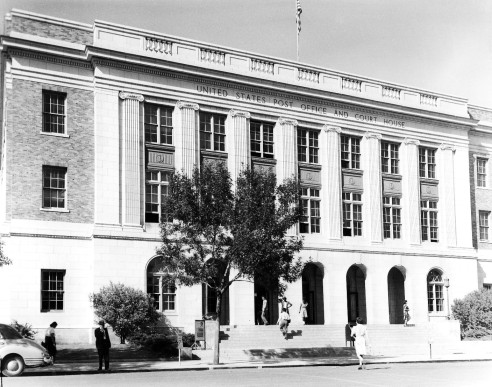
By the time Kefauver and his committee rolled into Las Vegas via train, they had a list of interviewees that included Wilbur Clark and Moe Dalitz among others. They convened in the Federal courthouse and post office. Dalitz was quoted as telling Kefauver and his committee who criticized him for being a bootlegger, "If you hadn't have drunk it, I wouldn't have bootlegged it."

After two hours, the committee adjourned and went on a field trip to Hoover Dam. which had little or nothing to do with organized crime but is one of the great architecural marvels of the 20th Century.
The aftermath of the Kefauver hearings did have an upside for Las Vegas and Nevada. The other cities that were involved in gambling, it was illegal there. Here in Las Vegas (and throughout Nevada) gambling was legal.
Organized crime began to seriously look at Las Vegas as their headquarters for gambling and over the next few years that relationship grew and took on more importance than Estes Kefauver and his committee ever intended or ever realized. It would be another 30 years before Las Vegas was able to break the mob's hold on Las Vegas.
To honor this event, the people behind the Organized Crime and Law Enforcement Museum ( better known as the Mob Museum where the hearings were held) are having a media event. Mayor Oscar Goodman (for those who love irony, Goodman as a mob attorney defended his clients in the courthouse) and others will be in attendance.




